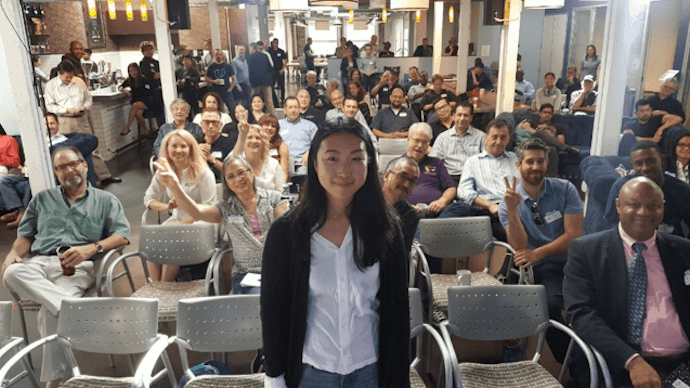Location, location, location
So you want to go global. The first question is, where? Knowing your target market and doing your homework is critical to success. Start with basic market research: economic environment, market size, ease of doing business, existing competition – collect reports and analyze. Then, look at your company data. Website traffic, conversions, lead flow – the geographic breakdown will paint a picture of what makes sense.
Data rules, so get your hands on as much as possible and analyze it realistically. And think about whether you need a physical presence in the market, which can be expensive. At the same time, local teams can be extremely valuable sources to tap into. Fails like this where you think, how the hell did that happen? Well, HQ probably forgot to consult their local teams.
One size fits all
Once you’ve identified the market you want to expand into, you need to get to know it better. Any company that tries to launch identical products in different markets will run into problems. Even huge companies like Best Buy and Walmart have failed on this front – their model of large superstores just didn’t cut it in Asia and Europe. So think about your product.
The key here is to provide a consistent experience no matter where you are in the world, while at the same time adapting to meet the needs of each market. It might be the name, menu, or as ‘simple’ as becoming accredited in that market. Prices and payment methods also need adapting. Credit cards aren’t as widespread everywhere as they are in the west, and in countries such as Japan, paying cash at delivery is still very common. There is evidence out there that companies that implement global payments see revenues jump as much as 20%, so it’s definitely worth considering.
xl8, l10n, i18n
A key factor in going global is speaking your market’s language. We’re talking about the three pillars of going global:
- xl8: Translation is about the transfer of words from one language to another. It might be a mix of technical translations, transcreations – translating the message – and product texts, and the translator should be focused on accuracy, style, and consistency.
- l10n: Localization is a bit more complex; it includes translation, but also the adaptation of the design and layout, color and symbolism, currency and date formats, legal content, links – it’s basically about making the experience as native as possible.
- i18n: Internationalization creates the framework by making the product global-ready and multilingual-ready, from preparing UI strings for translation, to building infrastructure that can deal with different currencies and time zones. They nestle within each other like Russian dolls.
Companies approach this in several ways, from using in house resources to setting up local offices, or working with freelancers or language service providers like Supertext. Usually, it’s a mix of all the above. What many startups don’t realize is that there’s a lot of tech involved in the process. From CAT tools to CMS integrations to – inevitably – machine translations, language service providers can offer a range of technology that makes the process faster, simpler, and less prone to error.
But as important as tech is, it’s even more crucial to get the content right. The design and copy of your website, marketing campaign, or app were created to reach your audience in the most efficient way possible with the most poignant message. So why wouldn’t you want that for all your markets? Take Taco Bell, which recently launched in Japan. Having spent all that money on breaking into the market, it made a real mess of its website. And is facing a big backlash as a result. So regardless of whether you’re working with an in-house team, freelancers, or an LSP – this step is crucial for success.
Superstrategy
So how did Supertext approach its global expansion? Watch the presentation or listen to the podcast to find out.
Image: Supertext
